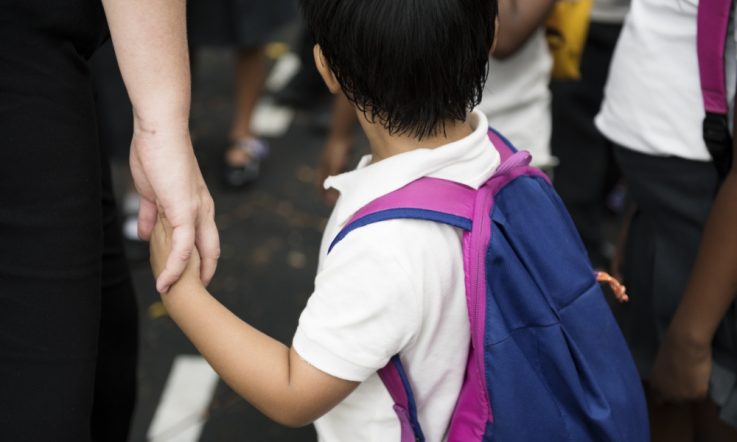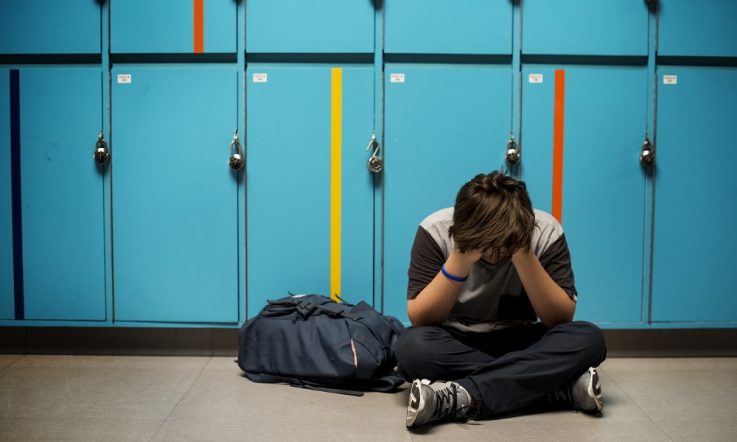Last year in an episode of our Behaviour Management series, Teacher caught up with Dr Lesley-anne Ey from the University of South Australia to discuss her research into how early childhood teachers can identify problems with bullying in their own school context, and use this information to design tailored and targeted education and prevention programs. Here, she gives Teacher an update on new research into early childhood teachers’ understanding of bullying behaviour.
Teachers play an important role in preventing bullying and intervening when it occurs, particularly in the early years where children are more likely to depend on their teachers to help them fix their problems.
However, new research from Dr Lesley-anne Ey from the University of South Australia and Marilyn Campbell from Queensland University of Technology has found many early childhood teachers have difficulty identifying when a behaviour is bullying, and when it is instead fighting behaviour.
Their paper Australian Early Childhood Teachers’ Understanding of Bullying, published in the Journal of Interpersonal Violence, outlines results from an online survey completed by 95 early childhood teachers working in Australia.
The survey assessed four elements of understanding of bullying behaviours by asking the educators:
- for a description of bullying in their own words;
- for a description of fighting in their own words;
- to tick which behaviours are classified as bullying and which are fighting from a provided list; and,
- to assess which scenarios from a list of 20 depicted bulling behaviour, and which scenarios did not.
Characteristics of bullying
‘Bullying is defined as behaviour that involves repetitive and intentional actions to inflict injury or discomfort upon another who is unable or unwilling to defend themselves due to a social or physical power imbalance,’ Ey tells Teacher. ‘This definition was first termed by Olweus in 1994 and is widely accepted and used in scholarly literature.’
These three characteristics as described by Ey – intent to harm, repetition and power differential – are key to bullying behaviour. Alternatively, fighting is a singular event which involves individuals who are equally involved and therefore have somewhat equal power.
‘If children are fighting, we usually address both participants and educate them on how to solve their differences constructively,’ the journal paper reads. ‘However, it would be unfair to further traumatise a child who is being victimized by involving them in a discussion with the child who is bullying them.’
Ey tells Teacher it’s important early childhood educators are aware of the three elements of bullying that differentiates bullying behaviour and fighting . ‘… the way teachers need to respond to bullying will be different from how they need to respond to fighting.’
Understanding of bullying and fighting behaviours
When describing bullying in their own words, only 17.7 per cent of teachers included all three of the characteristics of bullying. Three-quarters (76 per cent) included repetition in their definition; 57 per cent discussed the intent to cause harm, and 40 per cent spoke about a power differential.
Of the teachers who listed specific types of bullying in their definition, physical and emotional bullying were mentioned most frequently, followed by cyberbullying, verbal bullying and social bullying.
In their definitions of fighting behaviour, 7 per cent of teachers mentioned characteristics of bullying. Further, 92 per cent discussed acts of aggression, violence or conflict. One-quarter (25 per cent) said fighting behaviour involved equal power, and 20 per cent included the fact that fighting behaviour is a single incident.
‘Although teachers’ descriptions of fighting were not inaccurate, only a small number of teachers mentioned elements of fighting that differentiated fighting from bullying,’ the Ey and Campbell write. ‘Just over half of the teachers referred only to aggression, violence, or conflict in their definitions (52 per cent), which is present in both fighting and bullying. However, only 30 per cent mentioned one other aspect that specifically differentiates fighting from bullying such as not constant or equal participation and even less (10 per cent) identified two or more differentiating aspects.’
Identifying between bullying and fighting
In the list of 20 scenarios presented to teachers in the survey, five illustrated traditional bullying, five were non-bullying face-to-face situations, five were cyberbullying scenarios, and five showed non-cyberbullying scenarios.
An overwhelming majority (97 per cent) of teachers were able to recognise the five traditional bullying scenarios and 98 per cent successfully identified all of the cyberbullying scenarios. However, 20 per cent of teachers labelled an instance of physical aggression, a playful joke and a single cyber-fight as bullying. ‘This is a concern that for some teachers the word bullying has morphed into being used to describe every aggressive behaviour with no differentiation between bullying and fighting,’ the authors write.
‘We know prevention is better than cure,’ Ey tells Teacher. ‘Early childhood educators should be educating children about what bullying is and how to report bullying, which should lead on to educators teaching children about defenders versus bystanders. Taught early enough, bullying behaviours may decline.’
As part of a related piece of research – Supporting early childhood educators to address bullying in junior primary classes through the co-creation of anti-bullying interventions and resources: A Proof of Concept Study – Ey and University of South Australia colleague Professor Barbara Spears have published an anti-bullying educational resource, designed for children aged five to eight.
Available to download via the link, it includes illustrated scenarios and other resources, and is aimed at supporting early childhood educators to design and implement an anti-bullying program tailored to their own school context.
References
Ey, L., & Campbell, M. (2021). Australian Early Childhood Teachers’ Understanding of Bullying. Journal of Interpersonal Violence. https://doi.org/10.1177/08862605211006355
Consider the three characteristics of bullying in the widely accepted research definition: intent to harm, repetition and power differential.
Think about a bullying incident you recently worked to resolve, and reflect on why you identified this incident as bullying. Did you consider each characteristic when identifying this incident? If this incident didn’t involve each characteristic, why do you think you classified it as an example of bullying? With this knowledge, how would you classify the incident now?



